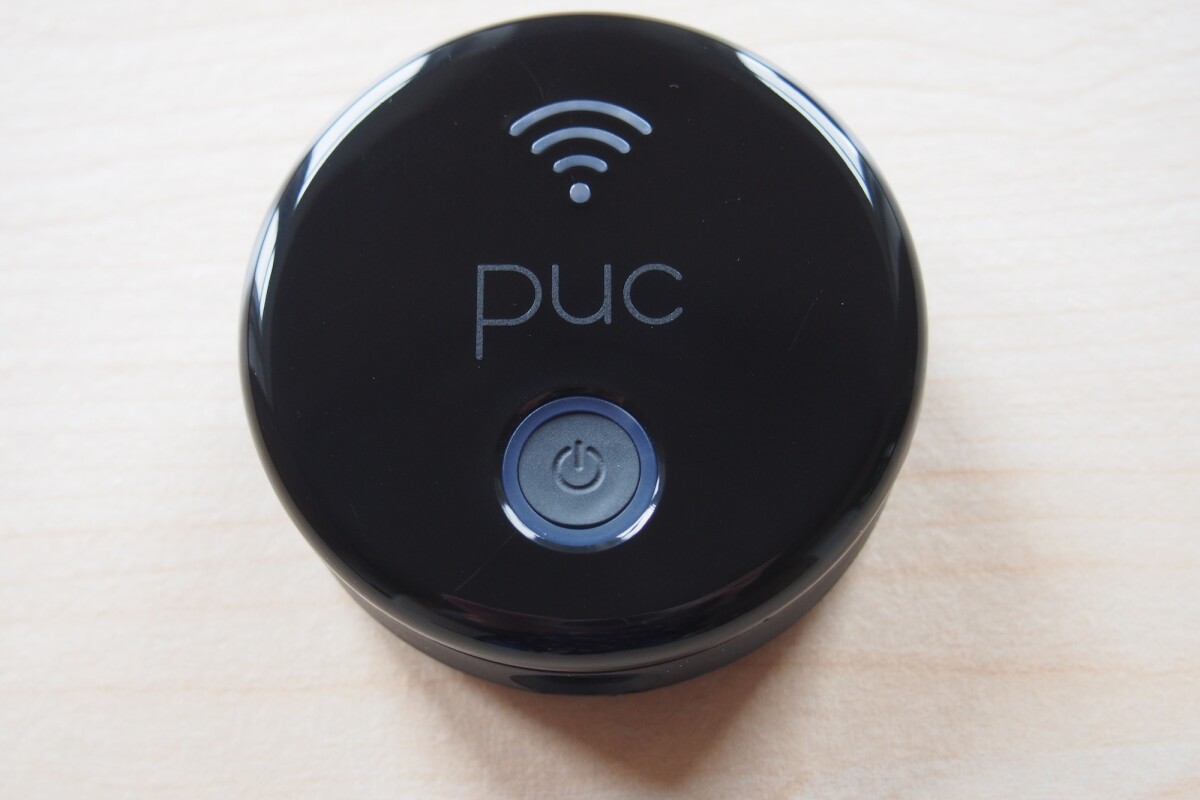iOS has matured as a music-making platform in recent years, but those of us who wish to hook-up a real MIDI controller such as a keyboard or drum machine to an iPad or iPhone generally need to use a couple of cables and adapters per device. It's a minor issue, but one that feels distinctly un-Apple. The PUC iOS MIDI interface by Zivix promises to free iOS music-makers from this hassle by enabling a MIDI controller to connect to an iOS device wirelessly.
At first glance, the PUC may be accused of offering a solution where there is no problem; after all, what's the big deal with simply plugging in your MIDI interface? But I've knocked my MacBook Pro and iPad off the table enough times to realize that a wireless MIDI interface could be useful. It's also nice to reduce the number of wires in the studio where possible.
The PUC I tested arrived with a basic instruction booklet, a couple of AA batteries (though it also has a Micro USB port for backup power), and a standard 5-pin MIDI cable. The PUC is marketed as an iOS device, but PC and OS X drivers are also in the works, and there's an OS X beta driver available for download from Zivix.
A company rep informed me that the two AA batteries are good for up to 15 hours of continuous use. While I didn't test this claim, I did use it over separate sessions for a few hours each without it running out of juice. It measures 7.6 cm (3 in) in diameter and 3.2 cm (1.25 in) tall.

To get started using the PUC, you'll first need to download the free PUC companion iOS app. This runs in the background and interfaces between your iPad and the PUC. You'll also need to be running at least iOS 6, and using an iPad, iPhone, or iPod Touch with a Lighting Adaptor. In addition, the MIDI interface needs to be packing a real 5-pin MIDI output, and not just a USB output, as is seen on many modern MIDI controllers.
Switching on the PUC using the power button on top presents some pleasant flashy green and red lights, and launching the companion iOS app then walks you through the steps of creating a new Wi-Fi network, over which the PUC and iOS device communicate. This obviously means that you won't be connected to your wireless home network on the iOS device, so there'll be no web browsing, social media updates or checking emails as you jam.

Initial setup complete, I connected the PUC to my inexpensive M-Audio MIDI Keyboard with the supplied MIDI cable and fired up Garageband on the iPad. The keyboard immediately connected to iOS Garageband and worked perfectly.
It's really very simple to use and there was no lag or issues of any kind during my time testing it. In particular, the virtual Piano in Garageband worked great, and it was nice to have a few less wires to worry about while playing. Though I only tested it with Garageband, the PUC is compatible with all Core MIDI-compatible iOS music-making apps.
In all, there's not too much to get excited about when discussing the PUC – but that's no mark against it. The PUC is a simple tool that does its job very well and with minimum fuss. So if you're looking to simplify your MIDI/iPad setup, then it's recommended.
The PUC is available now from US$129.99.
Product page: PUC










